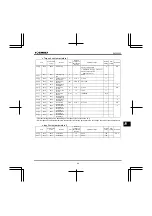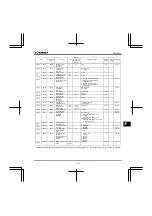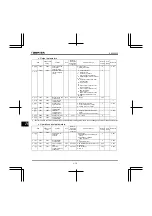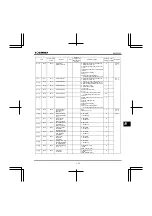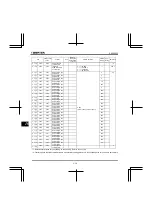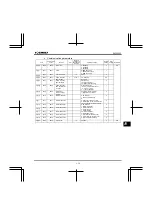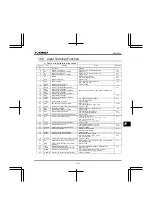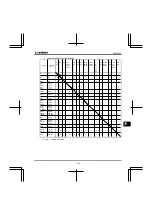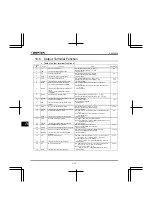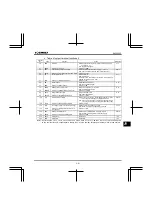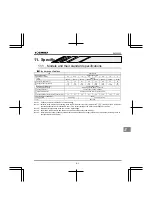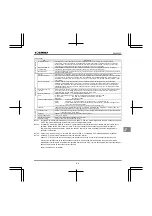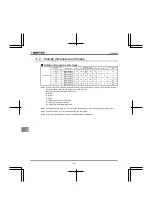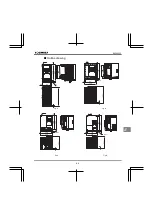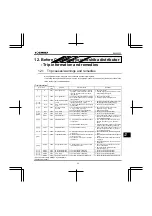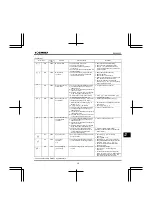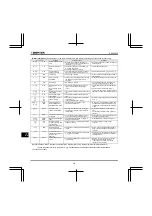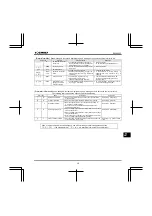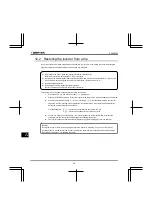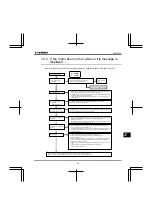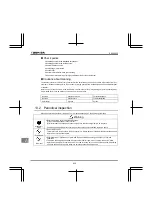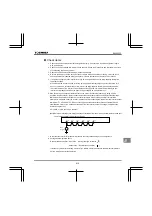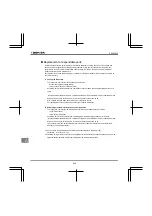
E6582233
K-2
11
Common specification
Item Specification
Pr
inc
ipal c
o
ntr
o
l fu
nc
tions
Control system
Sinusoidal PWM control
Output frequency range
0.1 to 400.0Hz, default setting: 0.5 to 50Hz, maximum frequency: 30 to 400Hz
Minimum setting steps of
frequency
0.1Hz: analog input (when the max. frequency is 100Hz), 0.01Hz: Operation panel setting and communication
setting.
Frequency accuracy
Digital setting: within ±0.1% of the max. frequency (-10 to +60°C)
Analog setting: within ±1.0% of the max. frequency (25°C ±10°C)
Voltage/frequency
characteristics
V/f constant, variable torque, automatic torque boost, vector control, automatic energy-saving, V/F 5-point setting,
Auto-tuning. Base frequency (20-400Hz) adjusting to 1 & 2, torque boost (0-30%) adjusting to 1 & 2, adjusting
frequency at start (0.1-10Hz)
Frequency setting signal
Setting dial on the front panel, external frequency potentiometer (connectable to a potentiometer with a rated
impedance of 1k-10k
Ω
), 0-10Vdc / 0-5Vdc (input impedance: VI=40k
Ω
), 4-20mAdc (Input impedance: 250
Ω
).
Note 1)
Terminal board base
frequency
The characteristic can be set arbitrarily by two-point setting. Possible to set: analog input (VI).
Frequency jump
Setting of the jump frequency and the range.
Upper- and lower-limit
frequencies
Upper-limit frequency: 0 to max. frequency, lower-limit frequency: 0 to upper-limit frequency
PWM carrier frequency
Adjustable range of 2k to 12kHz (default: 4kHz).
PID control
Setting of proportional gain, integral gain, differential gain and control waiting time. Checking whether the amount of
processing amount and the amount of feedback agree.
O
per
ati
on s
pec
ific
at
ions
Acceleration/deceleration
time
Selectable from among acceleration/deceleration times 1 & 2 (0.0 to 3000 sec.). Automatic
acceleration/deceleration function. S-pattern acceleration/deceleration 1 & 2. Control of forced rapid deceleration.
DC braking
Braking start-up frequency: 0 to maximum frequency, braking rate: 0 to 100%, braking time: 0 to 20 seconds,
emergency DC braking.
Dynamic Braking Drive
Circuit
Control and drive circuit is built in the inverter with the braking resistor outside (optional).
VFNC3E-4004P to 4007P models cannot be used with the braking resistor.
Input terminal function
(programmable)
Possible to select from among about 60 functions, such as forward/reverse run signal input, jog run signal input,
operation base signal input and reset signal input, to assign to 5 input terminals. Logic selectable between sink and
source.
Output terminal functions
(programmable)
Possible to select from among about 40 functions, such as upper/lower limit frequency signal output, low speed
detection signal output, specified speed reach signal output and failure signal output, to assign to FL relay output,
open collector output terminals.
Forward/reverse run
The RUN and STOP keys on the operation panel are used to start and stop operation, respectively.
Forward/reverse run possible through communication and logic inputs from the terminal block.
Jog run
Jog mode, if selected, allows jog operation from the terminal board.
Preset speed operation
Frequency refe 15-speed operation possible by changing the combination of 4 contacts on the terminal
board.
Retry operation
Capable of restarting automatically after a check of the main circuit elements in case the protective function is
activated. 10 times (Max.) (selectable with a parameter)
Various prohibition settings
/ Password setting
Possible to write-protect parameters and to prohibit the change of panel frequency settings and the use of operation
panel for operation, emergency stop or resetting. Possible to write-protect parameters by setting 4 digits password
and terminal input.
Regenerative power ride-
through control
Possible to keep the motor running using its regenerative energy in case of a momentary power failure (default:
OFF).
Auto-restart operation
In the event of a momentary power failure, the inverter reads the rotational speed of the coasting motor and outputs
a frequency appropriate to the rotational speed in order to restart the motor smoothly. This function can also be
used when switching to commercial power.
Failure detection signal
1c- contact output Note 2)
Maximum switching capacity : 250Vac-2A , 30Vdc-2A (At resistive load cos
Φ
=1),
250Vac-1A (cos
Φ
=0.4) , 30Vdc-1A (L/R=7ms)
Minimum permissible load : 5Vdc-100mA, 24Vdc-5mA
<Continued overleaf>

